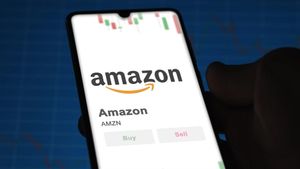
Industrial technology company Fortive (NYSE: FTV) met Wall Street’s revenue expectations in Q2 CY2025, but sales were flat year on year at $1.02 billion. Its non-GAAP profit of $0.90 per share was 51.9% above analysts’ consensus estimates.
Is now the time to buy FTV? Find out in our full research report (it’s free).
Fortive (FTV) Q2 CY2025 Highlights:
- Revenue: $1.02 billion vs analyst estimates of $1.01 billion (flat year on year, in line)
- Adjusted EPS: $0.90 vs analyst estimates of $0.59 (51.9% beat)
- Adjusted EBITDA: $288.4 million vs analyst estimates of $286.2 million (28.4% margin, 0.8% beat)
- Management lowered its full-year Adjusted EPS guidance to $2.55 at the midpoint, a 34.6% decrease
- Operating Margin: 16.7%, down from 17.9% in the same quarter last year
- Organic Revenue was flat year on year vs analyst estimates of flat growth (36.6 basis point miss)
- Market Capitalization: $16.12 billion
StockStory’s Take
Fortive’s second quarter saw a negative market reaction as management attributed flat sales and operating margin pressure to late-quarter demand softness linked to tariffs, constrained U.S. government spending, and evolving healthcare policy. CEO Olumide Soroye called the quarter "pivotal" as the company completed the spin-off of Precision Technologies, but revenue fell below internal expectations due to deferred purchases in professional instrumentation and healthcare equipment. CFO Mark Okerstrom also cited a "chilling effect" in government procurement activity, leading to higher backlog and project delays. Management’s tone was notably cautious, emphasizing operational resilience amid these external pressures.
Looking ahead, Fortive’s reduced full-year profit guidance reflects ongoing headwinds from tariffs and healthcare reimbursement uncertainty, with management expecting no material near-term improvement in end markets. Okerstrom outlined that tariff costs should be fully offset by the fourth quarter through pricing and supply chain adjustments, but warned of continued revenue volatility if the trade environment remains unstable. Soroye said, “We are emerging from the spin as a more durable and resilient company,” but acknowledged that visibility on government and healthcare demand timing remains limited. The company plans to focus on operational discipline and selective bolt-on M&A while executing its new Fortive Accelerated strategy.
Key Insights from Management’s Remarks
Management pointed to deferred customer spending, government procurement delays, and healthcare policy shifts as the main sources of quarterly underperformance, while highlighting strong recurring revenue growth and progress on strategic initiatives.
- Tariff-related demand deferral: The final weeks of the quarter saw customers postpone orders for Fluke’s short-cycle products due to uncertainty around U.S.-China tariffs. This led to increased backlog, with management expecting most of these deferred sales to return in the next several quarters as conditions stabilize.
- Government spending constraints: State and local government budget tightening, particularly at year-end, suppressed procurement activity for Gordian’s solutions. Management reported that essential infrastructure projects remain in the pipeline but timing for revenue recognition is now more uncertain.
- Healthcare reimbursement policy impact: U.S. hospitals paused capital equipment purchases in response to new federal reimbursement policies, especially affecting sterilization and quality assurance equipment. Management noted that while demand remains, the timing of spending will depend on how hospitals adapt to changing economics.
- Recurring revenue momentum: Despite headwinds, Fortive grew double-digit annual recurring revenue (ARR) at Fluke and saw strong renewal rates across its software businesses, supporting future earnings stability.
- Strategic portfolio shift: The completion of the Precision Technologies spin-off and adoption of the Fortive Accelerated strategy marked a move toward a more focused company, with an emphasis on recurring revenues, disciplined capital allocation, and readiness for bolt-on acquisitions.
Drivers of Future Performance
Fortive’s outlook is shaped by macroeconomic and policy headwinds, with recovery hinging on the resolution of tariff issues, government budget trends, and healthcare spending patterns.
- Tariff mitigation strategies: Management expects the impact of tariffs to be fully offset by the end of the year through pricing actions, supply chain adjustments, and productivity initiatives. However, they cautioned that continued volatility in global trade policies could further affect demand visibility and short-term revenue.
- Pacing of government and healthcare recovery: The company is not assuming a swift rebound in state, local, or hospital spending, instead projecting a gradual normalization as budget cycles and policy clarity unfold. Recurring software revenues are expected to provide a partial buffer if project-based sales remain lumpy.
- Disciplined capital allocation and M&A: With improved free cash flow and reduced leverage following the Ralliant spin-off, Fortive intends to balance share repurchases with targeted bolt-on acquisitions, focusing on assets that meet strict financial and strategic criteria. Management said any deals will be evaluated for their fit with the recurring revenue model and overall strategy.
Catalysts in Upcoming Quarters
Going forward, the StockStory team will be tracking (1) the pace at which deferred orders in Fluke and Gordian convert into realized sales, (2) stabilization in healthcare equipment procurement as hospitals adapt to new reimbursement policies, and (3) the effectiveness of tariff mitigation strategies in restoring margin stability. Progress on bolt-on acquisitions and execution of the Fortive Accelerated strategy will also serve as important indicators of management’s ability to navigate macro and policy headwinds.
Fortive currently trades at $47.25, down from $50.89 just before the earnings. In the wake of this quarter, is it a buy or sell? Find out in our full research report (it’s free).
Our Favorite Stocks Right Now
Donald Trump’s April 2025 "Liberation Day" tariffs sent markets into a tailspin, but stocks have since rebounded strongly, proving that knee-jerk reactions often create the best buying opportunities.
The smart money is already positioning for the next leg up. Don’t miss out on the recovery - check out our Top 6 Stocks for this week. This is a curated list of our High Quality stocks that have generated a market-beating return of 183% over the last five years (as of March 31st 2025).
Stocks that made our list in 2020 include now familiar names such as Nvidia (+1,545% between March 2020 and March 2025) as well as under-the-radar businesses like the once-micro-cap company Kadant (+351% five-year return). Find your next big winner with StockStory today.
StockStory is growing and hiring equity analyst and marketing roles. Are you a 0 to 1 builder passionate about the markets and AI? See the open roles here.





